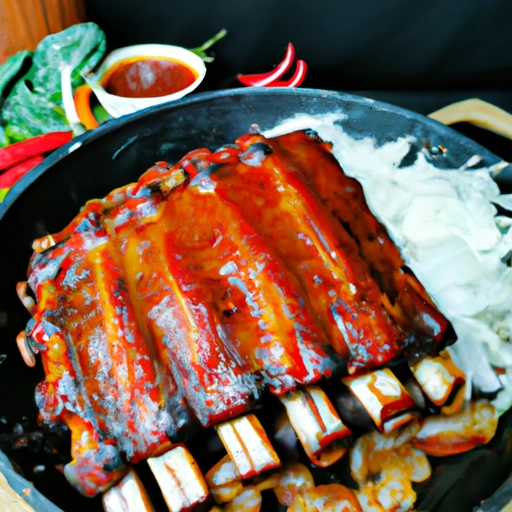Spare Rib
Description

Spare ribs are a popular cut of meat obtained from the lower portion of a pig's rib cage. They are prized for their delicious taste and succulent texture when cooked properly. Spare ribs are typically larger and have more bone than their counterpart, baby back ribs, but they also contain more meat and fat, which contributes to their rich flavor.
Common uses
Spare ribs are commonly used in dishes where they are slow-cooked, grilled, or smoked to create a tender and flavorful meal. The ribs are often marinated or rubbed with a blend of spices before cooking to enhance their natural flavors.
Nutritional value
Calories
A single serving of spare ribs (3 oz or approximately 85g) typically contains about 250 to 300 calories.
Protein
Each serving of spare ribs provides about 14 to 20 grams of protein, essential for muscle growth and repair.
Fat
Spare ribs are rich in fat, with a serving containing anywhere from 20 to 25 grams, depending on preparation.
Carbohydrates
Spare ribs contain minimal carbohydrates, usually less than 1 gram per serving unless they are coated in a sugary sauce or rub.
Vitamins
They provide a source of B vitamins, particularly vitamin B12, which is vital for nerve health and the production of DNA.
Minerals
Spare ribs also offer minerals such as zinc, selenium, and phosphorus, which are important for various bodily functions.
Health benefits
While spare ribs are high in fat, they also offer nutritional benefits such as protein for muscle maintenance and B vitamins. However, moderation is key to balancing enjoyment with a healthy diet.
Potential risks
Due to their high fat content, excessive consumption of spare ribs can lead to increased risks of heart disease and weight gain. It's important to consume them in moderation, especially for individuals with dietary restrictions or health concerns.
Common recipes
Spare ribs are featured in a variety of recipes, from American BBQ ribs smothered in a sweet and tangy sauce to Chinese spare ribs with hoisin sauce. They can be found in recipes like spicy rib stews, marinated and grilled rib dishes, and slow-cooked rib meals that fall off the bone.
Cooking methods
Popular cooking methods for spare ribs include grilling, smoking, slow-cooking, and roasting. Each method brings out a different aspect of the ribs' flavor and texture.
Pairing with other ingredients
Spare ribs pair well with a multitude of flavors, from smoky and sweet to tangy and spicy. They complement sides such as coleslaw, cornbread, roasted vegetables, and mashed potatoes.
Summary
Spare ribs are a flavorful and versatile ingredient enjoyed in a multitude of cuisines worldwide. With proper cooking methods, they can be transformed into a succulent and mouthwatering dish. Whether smoked, grilled, or slow-cooked, spare ribs provide a hearty and satisfying meal. However, due to their high fat content, they should be enjoyed in moderation within a balanced diet.